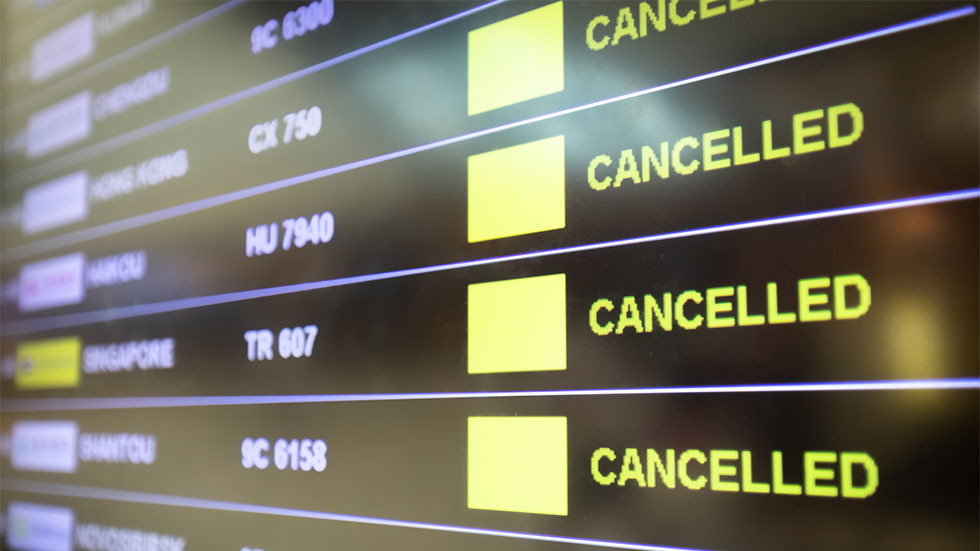Money-Saving Strategies for Booking Airfare
Twelve easy tips to help you land a cheaper ticket on your next flight


What’s the secret to paying less for your next plane ticket? Timing—when to book and when to fly—for starters. That can be tricky, though, with air prices often fluctuating faster than, say, your blood pressure during a Super Bowl overtime. Still, using some simple strategies can help you save money on your next flight. Here’s how.
.png?h=1744&w=980)
1. Let Google be your guide
Google Flights tracks airfare and shows you all available flights for a particular itinerary (with the exception of flights for Southwest Airlines, which doesn’t share fares with third parties). It also presents a price history for similar flights in the past 12 months and data on when prices are historically at their lowest. You may also see suggested dates for the best time to book a flight to maximize your savings. You can even set price alerts to monitor when a fare drops or rises.
2. Book in advance—but not too far in advance
Common wisdom says that the Goldilocks window for booking airfare is about a month to a month-and-a-half prior to departure for a domestic flight and about four months out for an international flight, but this wisdom doesn’t always hold true. The elusive sweet spot depends on your specific route, including when and where you’re traveling. Again, check Google Flights for price histories to find the best booking window.
3. Book on the best day for you
Common wisdom has also tagged Tuesdays as the best day to book a flight, but that thinking has gone out, ahem, the plane window in recent years. Nowadays, booking on a Tuesday, Wednesday or Thursday may score you minimal—only a percentage or two—in savings over booking on a weekend, according to Google Flights.
4. Be flexible with the days you fly
As a matter of supply and demand, the day you fly can greatly impact the price of your ticket. Shifting your travel dates to the left or right of the calendar by a few days of your desired travel date can reap real savings. Historically, midweek departures offer the cheapest fares, while weekend departures will ding your wallet a bit more, with Sunday typically being the most expensive day to fly.
Along with flying to/from your destination during its off-season or shoulder season, you still may be able to pocket savings around high-travel-demand holidays by flying on the actual holiday instead of just before or after it. And, of course, overnight flights that take off late at night and arrive in the wee hours of the morning are typically a better bargain than other flights (though the cost savings can come at a physical toll; they don’t call them “red-eye” flights for nothing).

5. Search for a single ticket
Even if you need multiple seats, search for a solo ticket as well as a block of tickets. Depending on the airline’s pricing structure, buying, for example, four tickets individually for a travel party of four may be cheaper than buying all four together at once. If you buy singly, though, be sure to contact the airline to link the reservations in the event flight schedules change. Also, be prepared for the possibility of sitting separately on the plane.
6. Weigh the value of two one-way tickets instead of a roundtrip ticket
Sometimes, the savings can be significant enough for it to make sense to book your return flight on a different airline.
7. Research alternative airports
You may live a hop, skip and jump away from XYZ large-hub airport, but sometimes, flying out of another nearby airport instead can be less expensive. Checking multiple airports may also pay dividends with a choice of more convenient itineraries.
8. Mull the pros and cons of a layover instead of a nonstop flight
Flying nonstop often comes at a premium—to the tune of about 20 percent, according to Google Flights—so booking a layover may work for you if you have the time and tolerance for the risks (missed connections, delayed or canceled flights, and so on) that could come with it.
Also, be careful not to fall into the trap of skiplagging—that is, making a connecting point—not the last stop—on a multi-leg flight your final destination. For example, you want to fly from Philadelphia to Chicago, but it’s cheaper to book a ticket from Philly to Las Vegas with a connection in Chicago, which you make your final destination, forgoing the Vegas leg of the flight. This travel hack is not only frowned upon by airlines but also could get you banned from flying on some of them.

9. Crunch the numbers of low-cost carriers
Many budget carriers win the price wars on upfront fares, but do the math on “extras” like fees for carry-on luggage, onboard refreshments, priority boarding and seat assignments. Those fees can quickly add up to a suddenly not-so-cheap fare. Also, look into the airlines’ record for on-time reliability rates, as time can be money for most travelers. Another consideration is whether the carrier has subsequent flights to your destination on your travel day, in case your flight is canceled and you need to get on another flight.
10. Consider nonrefundable fares
It’s no surprise that fully refundable fares are pricier than nonrefundable ones, but not all is lost if your plans change with a nonrefundable ticket. If you need to cancel or change your flight (due to no fault of the airline), you still may be able to get at least part of your nonrefundable ticket’s value back as a credit toward a future flight with the airline. Ask your airline about possible cancellation and change fees, though.
11. Use your rewards points and frequent flier miles
Redeeming points and miles rather than paying actual cash for a flight can feel like flying on Monopoly money. Talk about a win-win. But be sure to redeem those rewards sooner rather than later due to devaluation. Airline programs may devalue their points—and sometimes without warning—by hiking the required points for bookings, making your points worth less.
On the upside, an increase for certain bookings may also come with a decrease for others—for example, off-peak travel bookings. Nevertheless, it’s often wiser to use points rather than hoard them and run the risk of losing the value of at least part of them.
12. Take advantage of the 24-hour grace period
Thanks to a US Department of Transportation rule, you have 24 hours after the time of booking with a domestic airline to cancel your ticket without penalty as long as you book at least seven days before departure. Use that time to watch for price drops. If prices change enough in your favor, you can cancel your ticket for a full refund and then rebook at the lower fare.
Of course, if you really want to save big on airfare, travel by fare first, by itinerary second. Airlines sometimes promote amazingly affordable—often last-minute—airfare deals to various destinations around the world. This is your opportunity to have an adventure! Who knows, you could find yourself lazing on a beach, piña colada in hand, by this time tomorrow—and it might cost less than your last car fill-up did to get there!
